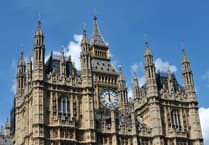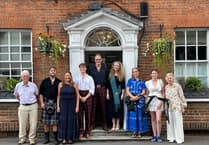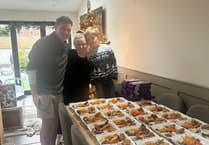THE FARNHAM Biodiversity Group is working with other groups and individuals to collect information about numbers and whereabouts of important species of wildlife in the area.
The information will be used for the Farnham Biodiversity Action Plan (FBAP). Many species are under threat, including the hedgehog.
The hedgehog is one of Britain’s most iconic animals – its charismatic demeanour and voracious appetite for insect pests in gardens make it a firm favourite.
However, it is a rare treat to see a hedgehog, let alone three. Local amateur wildlife enthusiast Nick Allen reports that he was reviewing the footage from his camera trap (a small device that records a video when triggered by movement) and to his delight there was a hedgehog!
He had been hoping to see a hedgehog in the garden for a long time and had tried to entice one in by erecting a hogitat (hedgehog home).
Over the next few months, the videos gave proof of a regular hedgehog visitor and understanding of its routine: a snuffle around the flowerbeds looking for insects before heading to the pond to have a drink of water.
Then one day there was not only one hedgehog but three! A mother plus two hoglets that were orbiting her like small satellites.
Unfortunately, shortly afterwards the hedgehogs disappeared without him knowing what happened to them.
This marvellous mammal has disappeared from the majority of the UK’s gardens over the last 30 years including in Farnham.
There are thought to be many reasons for this including habitat loss, pesticides getting into the food chain through consumption of garden insects that have been poisoned and habitat fragmentation.
Fragmentation occurs when links between gardens have diminished as residents have replaced hedgerows with fences and walls that are impenetrable to the hedgehog.
For a population to be sustainable and stable at least 33 individual hedgehogs must be in contact with one another.
However, there is hope, such as the example of a local project in the leafy south-west London suburb of Barnes, where residents worked together to create a hedgehog highway by boring small hedgehog sized holes between gardens to connect micro habitats.
The project has been so successful that the hedgehog population is not only stable but increasing.
The United Nations has attributed the loss of biodiversity as the biggest factor in the outbreak of coronavirus.
Connecting with nature and watching the wildlife in the garden has been a real source of solace to many during lockdown.
The Farnham Biodiversity Action Plan has set up a study to map the sightings of hedgehogs in the area.
Readers can help by reporting hedgehog sightings by scanning with a smart phone camera the QR code in this article (see left), to better understand their distribution with the hope that any populations can be stabilised by the creation of similar corridors.
An alternative is to report sightings through this link: https://bit.ly/39AdpcS
The Farnham Biodiversity Group is a Community Interest Company formed in 2019 to develop and implement the Biodiversity Action Plan for Farnham, in partnership with existing voluntary groups, local authorities and Surrey Wildlife Trust.
Further enquiries are welcomed as are offers of specialist knowledge and skills.
Email [email protected] or visit the website http://farnhambap.org.uk/





Comments
This article has no comments yet. Be the first to leave a comment.